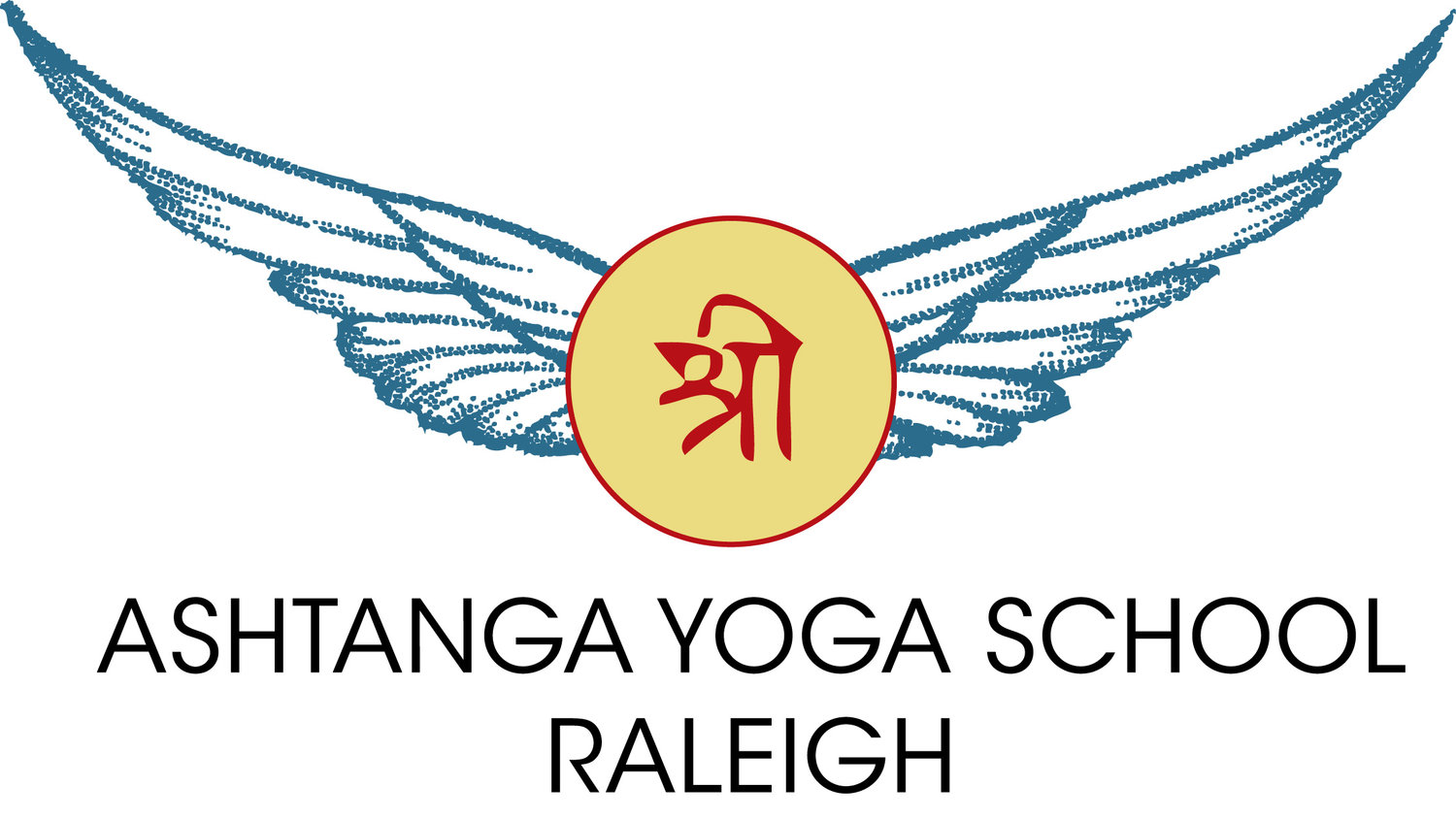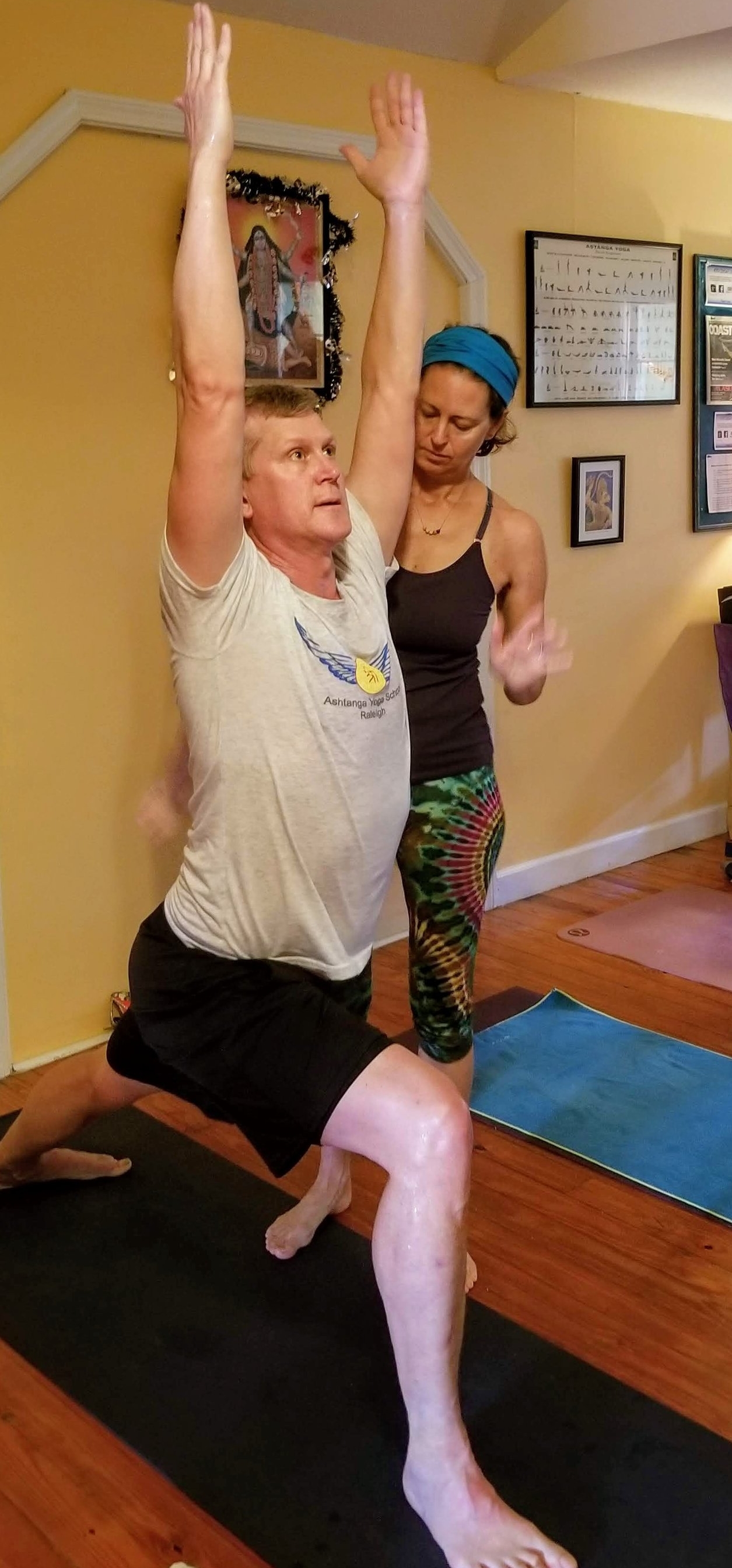One way to describe a Mysore-Style class is to say that it is like receiving a private lesson in a group setting. Go ahead - check my class descriptions...its there :-)
But it occurs to me that this may not really paint a complete picture of what Mysore style practice or Self-practice is all about. The term "Independent Study" comes to mind:
Philip Candy, the Deputy Vice Chancellor at the University of Southern Queensland, in his classic text “Self-direction for lifelong learning” (1991, p 13), quotes Forster (1972, p ii) while defining independent learning/study.
1) “Independent study is a process, a method and a philosophy of education: in which a student acquires knowledge by his or her own efforts and develops the ability for inquiry and critical evaluation; 2) it includes freedom of choice in determining those objectives, within the limits of a given project or program and with the aid of a faculty advisor; 3) it requires freedom of process to carry out the objectives; 4) it places increased educational responsibility on the student for achieving the objectives and for the value of the goals”.
Sounds familiar right? All the time I have new and prospective students interested in learning Ashtanga, but are resistant to attending a Mysore class as a beginner. They want to be led through the series, thinking that they will memorize the sequence by being guided through it repeatedly. Here's what happens...they get bored...OR they get hurt...and they don't come back.
I've seen very fit athletes and experienced vinyasa yoga practitioners daunted by the Primary Series in its entirety the first time they do it. There is a lot of repetition of movement (chaturanga/up dog/down dog) -- challenging for the body -- and long strings of postures that are similar but incrementally deeper -- challenging for the mind/ego.
I say this not to scare anyone away - quite the opposite! Come to class! Learn the Ashtanga Vinyasa practice!
BUT PLEASE! (pretty please with sugar on top...just consider it...really...please?)
Start in a Mysore style setting. Take it in slowly, in sips, not gulps, so that your body and mind can fully absorb the benefits. This practice is strong medicine, but not the kind to pinch your nose closed and swallow without tasting. This is the slow-release kind of medicine...its all in there, but the full benefits are absorbed over time, with practice and devotion and enjoyment!
Since opening AYSR, I've been offering Intro to Ashtanga courses each month, and several people have completed the course, and continued on to attend regularly (YAY!). This is in such stark contrast to what I saw all the previous years I've been teaching in this area. What is the difference? I believe its the expectation from the beginning that students are responsible for much of the learning, within the set curriculum (See #4 above). Also the consistent schedule helps...students can get used to coming regularly when they know it will be at the same time every day...even 6am :-) or they can practice at home on their own schedule (see #3 above). Everyone begins the practice at the same place, with the same movements, but each person progresses at their own pace, and some with variations as the teacher and student see fit (See #2 above). Being actively involved in setting the course for their own practice sets students up for deeper personal inquiry and discernment in practice (see #1 above). So...yes...I would say:
Ashtanga Mysore practice is Independent Study of the Eight Limbs of Yoga
I was a home practitioner for several years before I went to a class. I had been led through portions of the practice when I initially learned it, and then was expected to practice on my own between sessions. So I was nervous entering my first Mysore class - didn't know what to expect, etc...but I'll tell you - once I went Mysore-style, I never went back!
There is something so moving about being in a room with others - each of us working independently, but all feeling connected by our common struggles. I remember distinctly one day at the end of class, Kathy Hallen came up to introduce herself to me and asked me about my practice, where I had learned, etc. I couldn't speak...I burst into tears! Ha!! I was just feeling so full of love and grateful to be there and to have found this group of people who were as crazy as I was about this practice!! Its such a strange connection, really. Those of you who have been in a Mysore setting know...its such an intimate relationship to practice next to someone, but you may not even know their name!
Now...I will admit that I have not historically been the kind of person who does well with independent study scenarios. My college had, as its only option for College Algebra (required for graduation), a self-paced, independent study format...it did not go well for me...I'll tell that story another time...maybe...BUT I believe it was the subject matter that tripped me up. I have no passion for algebra. It's not that I can't do it, or can't learn it...I just have no interest...sorry to all the math lovers out there ;-) I've also not traditionally been the most self-motivated, self-starter kind of person...on most subjects that is...
So I feel like its a strange thing that I've become so immersed and obsessed with Ashtanga yoga...a decidedly independent study of yoga for the strongly self-motivated, and when I look around in a gathering of Ashtangis, I often feel like the misfit...I'm usually quite content with how my practice is going. I'm not usually the one asking how to perfect a pose or if there are "supplemental workouts" that could enhance my abilities on the mat. I don't say that to brag, its just how I feel about it. But I've been fortunate to have found a teacher in David Garrigues that sees I am capable of more and asks it of me. Otherwise I probably would have stopped doing this a long time ago.
But immersed and obsessed I have become! And for me the hook is definitely the physicality of it...the movement, the breath, the feeling of my whole body WAKING UP! Learning that I actually AM a self-motivated, independent learner, continuously curious about what I am capable of...continuously testing my own personal boundaries, and expanding those boundaries.
Anyhoo...
I just feel so lucky to have found the thing that, for me, keeps me curious, engaged and wanting more every day. Have you found yours?
P.S. I ordered the book by Philip Candy quoted above...gotta love Amazon one-click ;-)













